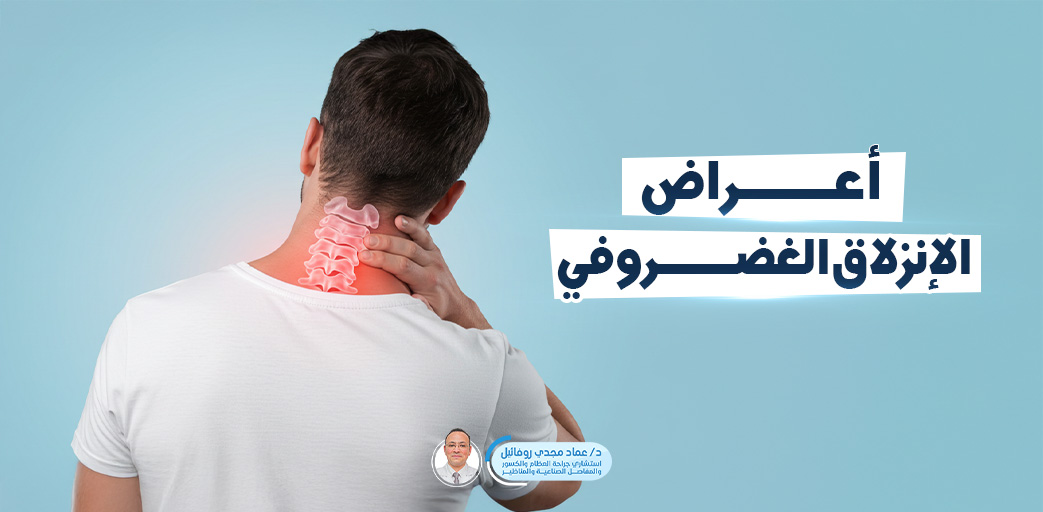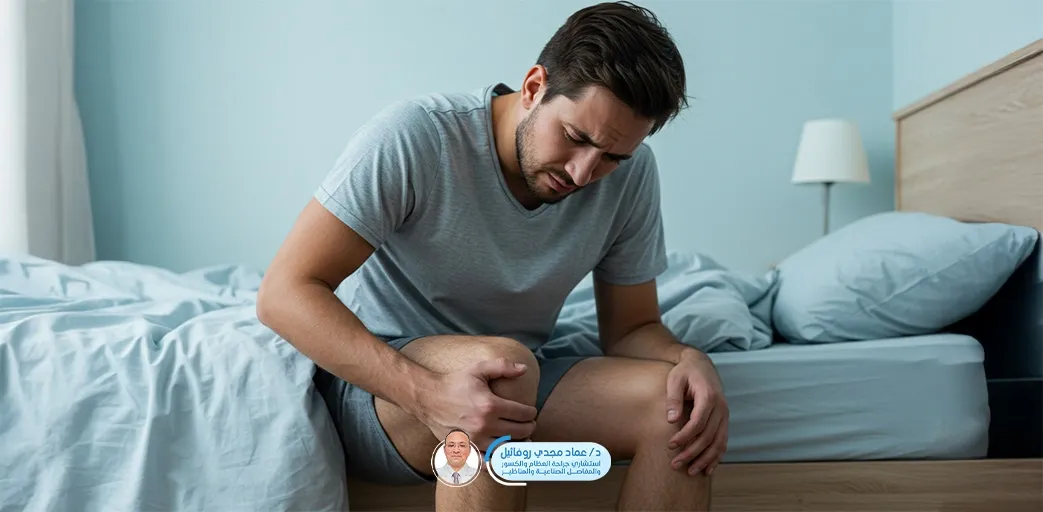


If you're looking to take control of your health and well-being, scheduling a medical appointment is a great first step. Whether it's a routine check-up, a specialist consultation, or a follow-up appointment with your healthcare provider, it's important to prioritize your health and take the time to address any concerns or questions you may have.


Herniated disc symptoms are among the most common reasons for visits to orthopedic and neurology clinics, especially with today’s sedentary lifestyles or jobs that require frequent physical exertion.
Symptoms usually begin with back or neck pain, but they can develop into movement problems or limb numbness if not treated in time.
In this article, we review the symptoms based on the location and severity of the disc herniation, along with how to manage them both medically and practically.
Symptoms vary depending on the affected disc’s location in the spine:

This is the most common type, usually occurring between the fourth and fifth lumbar vertebrae. Symptoms include:
Lower back pain radiating to the leg (sciatica)
Numbness or tingling in the foot or toes
Weakness in the leg muscles or difficulty walking long distances
Increased pain when bending or sitting for long periods
Occurs between the neck vertebrae and affects the arms and shoulders. Symptoms include:
Neck pain radiating to the shoulder or arm
Numbness or tingling in the fingers
Weakness in arm muscles or difficulty lifting objects
Headaches or dizziness in advanced cases
This is rare, but can cause:
Pain in the mid-back or chest
A feeling of pressure or tightness in the ribcage
Sometimes, pain that extends to the abdomen
Symptoms can vary significantly based on the severity of the disc herniation and the pressure on nearby nerves.
Mild back or neck pain
Slight muscle strain or heaviness in the affected area
Usually no radiating pain or nerve involvement
Discomfort increases with prolonged sitting or lifting
Often improves with physical therapy and lifestyle changes
Clear back or neck pain
Beginning of radiating pain to the arm or leg, depending on location
Mild numbness or tingling
Difficulty with movements like bending or prolonged sitting
Intense and persistent pain radiating to limbs
Numbness or muscle weakness
Decreased mobility or difficulty walking
May require strong medication or even surgical intervention if no improvement occurs
Severe and critical neurological symptoms
Loss of sensation in specific areas (e.g., leg or arm)
Marked muscle weakness or loss of limb control
Bladder or bowel problems in advanced cases
Warning:
Grade 4 herniation is a medical emergency and requires urgent surgical intervention to prevent permanent nerve damage.
These signs indicate the condition has become urgent:
Total numbness in limbs: Sign of intense nerve compression that may cause permanent damage
Sudden or severe limb weakness: Inability to lift the foot or grasp objects may signal nerve dysfunction
Loss of bladder or bowel control: A medical emergency requiring immediate surgery
Pain that persists despite rest or medication: Suggests inflammation or nerve compression too severe for conservative treatment
Visible spine misalignment or posture change: May be caused by severe herniation or ongoing nerve/muscle pressure
If you experience any of the above symptoms, don’t wait for a doctor’s appointment — go straight to the ER or call your doctor. Delayed treatment could lead to complications like partial paralysis or permanent nerve damage.
Treatment depends on the severity of symptoms and how much the herniation is affecting nerves and mobility.
Example: Lower back pain without numbness or radiating pain
A few days of rest without strain
Warm or cold compresses (depending on condition)
Anti-inflammatory medications and muscle relaxants
Light physical therapy to strengthen back muscles
Correction of posture during sitting and sleeping
Regular medication regimen
Specialized physical therapy to reduce nerve pressure
Spinal traction sessions (as advised by doctor)
Use of a medical back brace to support vertebrae during movement
Reduced physical strain and avoidance of heavy lifting
Example: Limb weakness, constant numbness, inability to walk short distances
Additional tests such as nerve conduction studies
Intensive physical therapy program
Stronger medications for nerve pain
Consideration of minor surgical options, including:
Epidural steroid injections
Disc aspiration or partial discectomy
Condition is classified as urgent
Immediate surgery is necessary to relieve nerve pressure
Every hour of delay increases the risk of permanent neurological damage
Treating a herniated disc isn’t just about medications or exercises — it also depends on your commitment to healthy daily habits and avoiding movements that keep stressing your spine.
Lie on your back with knees bent
Tighten abdominal muscles and lift the pelvis slightly
Hold for 5 seconds, repeat 10 times
Lie on your stomach
Lift your upper body using your arms
Keep your pelvis flat
Hold for 10 seconds, repeat 5 times
On your back, slowly lift pelvis while tightening the abdomen
Hold for 5 seconds, then slowly lower
Great for strengthening lower back muscles
Lie on your back and pull one knee toward your chest
Hold for 10 seconds, then switch legs
Helps reduce pressure on lumbar nerves
Yes — in many cases, a medical back brace helps relieve herniated disc symptoms, especially in early stages or during physical activity. While it doesn't treat the herniation directly, it reduces spinal pressure and supports the back during movement, making daily activities more manageable and less painful.
Understanding herniated disc symptoms is a crucial step to early detection and proper treatment.
Symptoms differ from person to person, but ongoing pain, numbness, or weakness in the limbs should never be ignored.
Whether mild or advanced, accurate diagnosis and regular follow-ups with your doctor are key to recovery and avoiding serious complications.